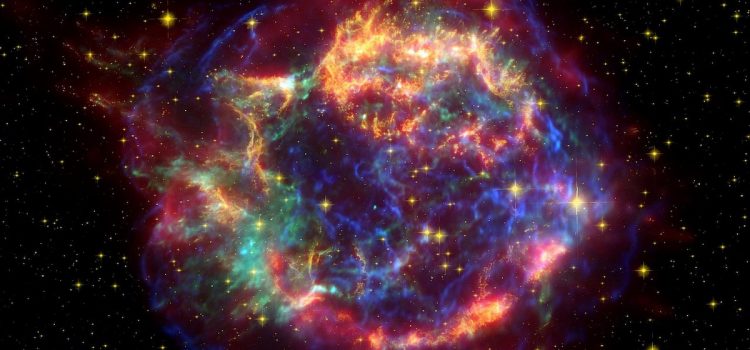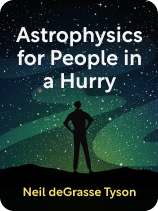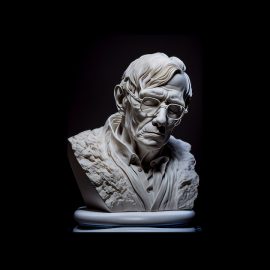

This article is an excerpt from the Shortform book guide to "Astrophysics for People in a Hurry" by Neil de Grasse Tyson. Shortform has the world's best summaries and analyses of books you should be reading.
Like this article? Sign up for a free trial here.
Are we made from stardust? What do people mean when they say that?
In his book Astrophysics for People in a Hurry, Neil deGrasse Tyson discusses the process of the Big Bang and what followed. Our bodies contain water, made up of hydrogen atoms that were created by the Big Bang. The Big Bang, however, didn’t create the other elements. That’s where stars come in.
Keep reading to learn about the link between human beings and stars, according to Tyson.
Are We Made From Stardust?
Are we made from stardust? To grasp this concept, we first must understand how stars are made—and how they die.
According to the Big Bang theory of cosmology, the universe began as a microscopic point that contained all the matter and energy that would ever exist. The universe was boiling with subatomic particles. It cooled as it expanded.
The first atoms condensed out of the primordial chaos. What formed were the two simplest elements—90% are hydrogen and 10% are helium. The universe’s temperature fell to a mere one billion degrees, and all the universe’s matter comprised a sea of hydrogen and helium gas so dense that any light it gave off was quickly reabsorbed. Tyson says that a universal dark age began that would last nearly 400,000 years.
During the dark age, the universe kept cooling. When at last it fell to 3,000 degrees, it was possible for photons of light to travel without being reabsorbed back into atoms. The universe began to glow, and it’s a glow we can still see today if we use the right instruments to detect it. From 13 billion light-years away in every direction, we can detect the cosmic background radiation—a snapshot of the universe as it was when the clouds first broke after the Big Bang.
For the next billion years, the densest clumps of gas collapsed under their own gravitational pull until the pressure inside them grew high enough for nuclear fusion to ignite. The first stars began to shine, and the galaxies were born. Also, says Tyson, the birth of the stars added something to the universe we now take for granted—all the elements on the periodic table. The Big Bang gave birth to hydrogen and a fractional amount of helium, but all the other elements we know of today were created in the hearts of burning stars.
To understand how you have to understand fusion. Unlike nuclear fission, in which relatively large and unstable atoms break apart, fusion creates energy by mashing small atoms together. If two hydrogen atoms slam into each other hard enough, they fuse to create one helium atom and release an amount of energy in the process. Tyson explains that stars first burn by fusing vast amounts of hydrogen, but, as they age and build up excess helium, that helium starts to fuse into carbon. Carbon will eventually fuse into oxygen, and the process continues, creating new elements until at last producing iron.
| The Lives of Stars New stars are born out of collapsing clouds of interstellar dust and gas. The initial collapse may be triggered by the shockwave of an exploding giant star or simply by the galaxy’s rotation causing gas clouds to pile into each other. Once the gas is dense enough, gravity takes hold and pulls more matter in until the pressure inside the heart of the cloud is high enough for nuclear fusion to ignite. And thus, a star comes to life. Throughout its existence, a star will burn as long as there’s enough hydrogen in its core. Ironically, the more massive a star is, the faster it will burn through its fuel. Our sun should have a 10-billion-year lifespan, while the largest stars only survive for a few million years. Red dwarf stars, the smallest and most common, have lives measured in trillions of years. Since the universe is only 13 billion years old, every red dwarf star ever born is still burning today. |
Iron holds a special place in the cosmos—it’s the atom where nuclear fusion ends. Fusing iron into heavier elements takes more energy than it produces. Once a star builds up too much iron in its core, the process of nuclear fusion stops. The star dies, shedding most of its mass back into space, including all the new elements it created. This, says Tyson, is the most important link between ourselves and the stars. Every hydrogen atom in the water in our bodies was created by the Big Bang. Every other atom inside us came into being in the heart of a star.
(Shortform note: The elements heavier than iron are also produced by stellar fusion, not in the process of a star’s normal life, but during a supergiant star’s final moments. When the fusion process ends in a truly massive star, one at least eight times the size of our sun, the star’s great bulk collapses under its own weight, smashing atomic nuclei into heavier elements. The implosion then rebounds as a supernova explosion, spreading new elements far into space, where they’ll become part of the next generation of stars and planets.)

———End of Preview———
Like what you just read? Read the rest of the world's best book summary and analysis of Neil de Grasse Tyson's "Astrophysics for People in a Hurry" at Shortform.
Here's what you'll find in our full Astrophysics for People in a Hurry summary:
- Neil deGrasse Tyson's simple explanations of some of the mysteries of the cosmos
- Why everyone should understand where we fit in the universal scheme
- Why humans need to climb off their pedestals






